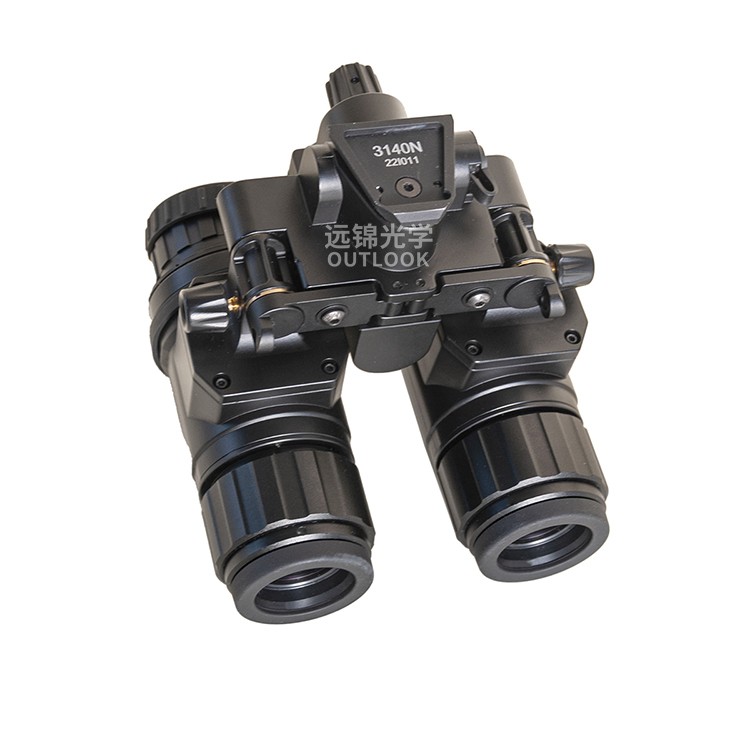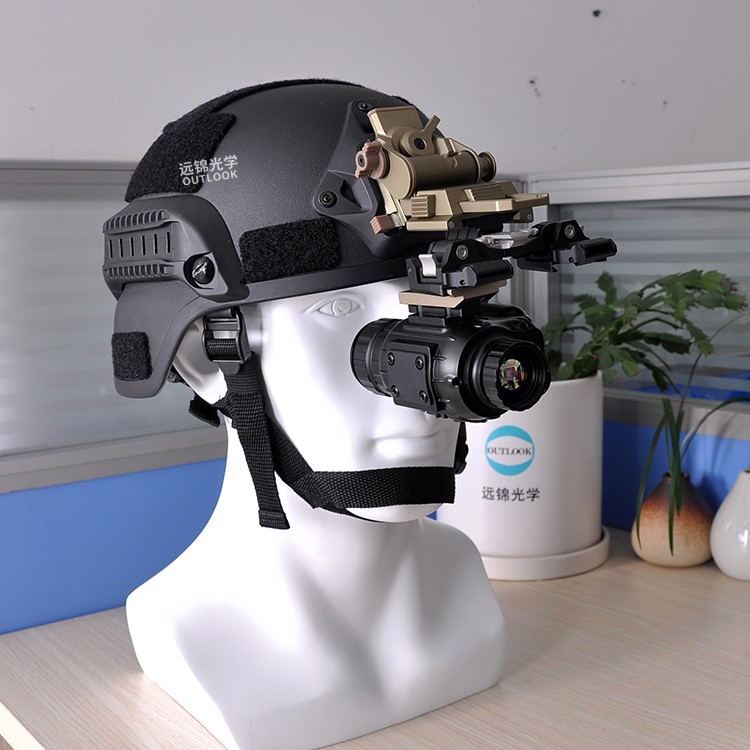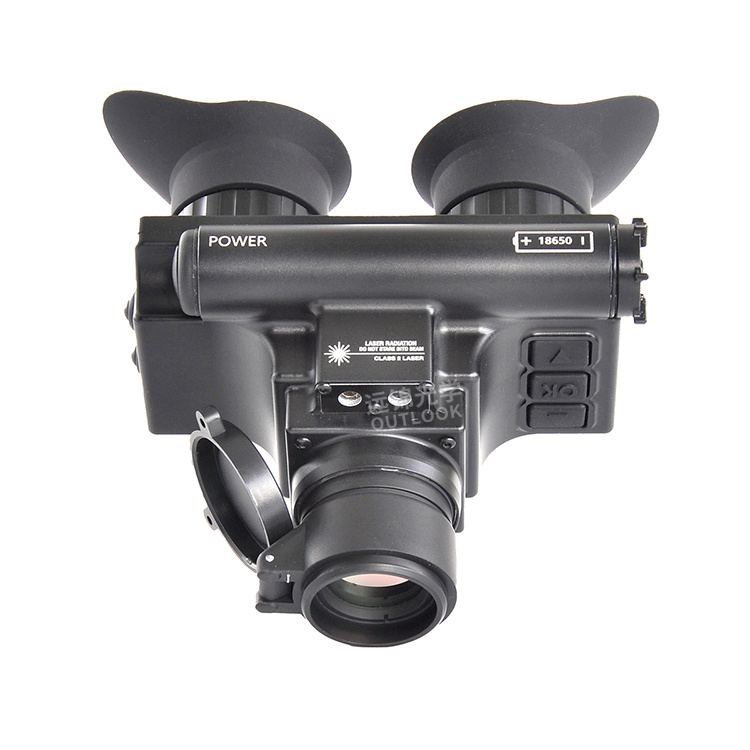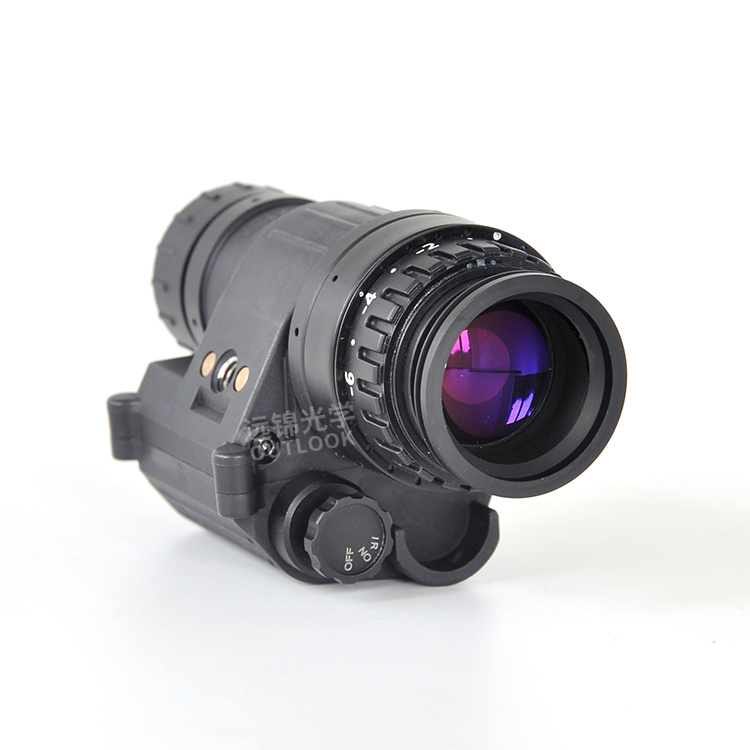Night vision and thermal imaging are two different night or low-light observation technologies, each based on different principles and suitable for different scenarios. The following is a comparison of their core features:
1. Night Vsion Device (NVD)
Principle:
Generate visible images by enhancing weak ambient light (such as moonlight, starlight) or infrared fill light (active infrared night vision).
The core component is the image intensifier tube (photocathode → microchannel plate → fluorescent screen), which converts photons into electrons and amplifies them.
Features:
Depends on ambient light: In a completely dark environment, it is necessary to rely on infrared fill light (but it may expose itself).
Imaging effect: Generates green-toned images (the human eye is most sensitive to green), with high resolution and can see details (such as faces and text).
Applicable scenarios:
Military reconnaissance, law enforcement (such as night patrols), and wildlife observation.
Short to medium-range observation (usually effective range 50-300 meters).
Disadvantages:
Easy to be damaged by overexposure under strong light (such as suddenly encountering car lights).
Cannot penetrate obstacles such as smoke and haze.
Classification:
Active infrared night vision: emits infrared light for illumination, poor concealment (easy to be discovered by other night vision devices).
Passive low-light night vision: only amplifies ambient light, more concealed (such as YJPVS14 low-light night vision device).
2. Thermal Imaging
Thermal Imaging Principle:
Detect infrared radiation (heat) emitted by objects, and different temperatures are displayed as different colors/grayscales.
The core component of thermal imaging products is an infrared detector (such as vanadium oxide, indium antimonide), which does not require any light.
Features:
Completely lightless operation: does not rely on ambient light, can be used in complete darkness, smoke, and haze environments.
Theraml Imaging effect:
Display temperature differences (usually black and white or rainbow colors, high-temperature targets are highlighted). The resolution is usually lower than that of night vision goggles, but it can identify hidden targets (such as animals in the grass).
Applicable scenarios:
Search and rescue (fire, earthquake), power detection (overheated parts), military (detection of camouflaged targets).
Medium and long-range observation (some models can reach several kilometers).
Disadvantages of thermal imaging:
Difficult to distinguish details (such as faces, text).
The effect may decrease in low temperature environments (small temperature difference between target and environment).
Classification:
Uncooled type: low cost, slow response (common in civilian use).
Cooled type: high sensitivity, used in professional fields (such as missile guidance).

Thermal imaging devices and low-light-level night vision devices are two different night vision technologies, with the following main differences:
1. Working principle
Thermal imagers: Based on the infrared radiation (heat) emitted by objects, images are formed by detecting temperature differences. All objects above absolute zero will radiate infrared rays.
Low-light-level night vision devices: Images are formed by amplifying weak light in the environment (such as moonlight and starlight), relying on visible light or near-infrared light.
2. Applicable environment
Thermal imagers: Can work in complete darkness, smoke, haze and other environments. The greater the temperature difference, the clearer the image.
Low-light-level night vision devices: Require weak ambient light, cannot work in a completely dark environment, and may be damaged under strong light.
3. Imaging effect
Thermal imagers: Display temperature distribution, usually in monochrome (such as black and white, rainbow colors, etc.), with clear outlines but lack of details.
Low-light-level night vision devices: Generate images similar to black and white or green light, retain more details and textures, but rely on light conditions.
4. Target Identification
Thermal imagers: can identify hidden targets (such as animals or people hiding in the grass), but cannot distinguish details such as facial features.
Low-light night vision devices: can provide clearer details, suitable for identifying faces, text, etc., but cannot penetrate obstructions.
5. Application scenarios
Thermal imagers: military, firefighting, search and rescue, industrial inspection, wildlife observation, etc.
Low-light night vision devices: military night combat, law enforcement, night monitoring, outdoor adventures, etc.
6. Price and maintenance
Thermal imagers: usually more expensive and have higher maintenance costs.
Low-light night vision devices: relatively cheap, but need to avoid strong light exposure.

In outdoor activities, choosing night vision devices or thermal imagers depends on specific needs, environment and usage scenarios. The following is a comparison and recommendation between the two:
1. Applicable environment
Thermal imager:
Advantages: Thermal imager is completely unaffected by light and can be used in completely dark, smoke, haze and other environments. Thermal imager can penetrate vegetation to find hidden targets (such as people or animals).
Disadvantages: Thermal imager cannot display details (such as faces and text). Thermal imager is greatly affected by temperature differences and may be less effective in extremely cold environments.
Night vision device (low light/digital):
Advantages: It can provide clearer details (such as faces and object textures) and is suitable for identifying target categories (such as distinguishing animal species).
Disadvantages: It depends on ambient light (moonlight, starlight). Infrared fill light is required in completely dark environments. Strong light (such as car lights) may damage the device.
2. Detection distance
Thermal imager: Thermal imager usually has a longer detection distance (such as YJRQ325, which can identify people 1180 meters away). Night vision goggles: Generally, the effective distance is shorter (usually 100-300 meters), and high-end military-grade products may be farther.
3. Portability and price
Thermal imagers: Usually thermal imager is heavier and more expensive (entry-level models cost about 10,000 yuan, and high-end models cost tens of thousands of yuan).
Night vision goggles: Lighter and cheaper (digital night vision goggles cost 3,000-10,000 yuan, and the price of low-light night vision goggles varies greatly due to different generations).
4. Recommended scenarios
Night hunting/search and rescue: thermal imagers can penetrate vegetation and find hidden targets, and are not affected by light.
Night hiking/camping: night vision goggles (low-light/digital), provide a more natural view, suitable for observing terrain and identifying obstacles.
Military/law enforcement reconnaissance: dual-light fusion equipment (such as YJ-ENVG-B), which has the advantages of thermal imaging and low-light night vision, and is suitable for complex environments.
Extreme weather (fog, smoke): thermal imagers, strong penetration ability, not affected by harsh environments.
Limited budget: Digital night vision devices (such as YJS761, YJS911), cost-effective, suitable for ordinary outdoor observation.
5. Conclusion
Give priority to thermal imaging devices: if you need to detect targets in complete darkness, smoke, dense forests, etc. (such as search and rescue, anti-poaching, military reconnaissance).
Give priority to night vision devices: if you pay more attention to detail recognition (such as observing wild animals, night navigation), and the environment has a certain amount of light.
Best choice: If you have sufficient budget, you can consider dual-light fusion devices (such as YJ-ENVG-B), which have the advantages of both.
Final suggestion: Determine according to specific use, budget and environment. If it is professional outdoor adventure or security, thermal imaging is more practical; if it is ordinary night observation, night vision devices are sufficient.

thermal imaging thermal imaging thermal imaging thermal imaging thermal imaging
thermal imaging thermal imaging thermal imaging thermal imaging thermal imaging


